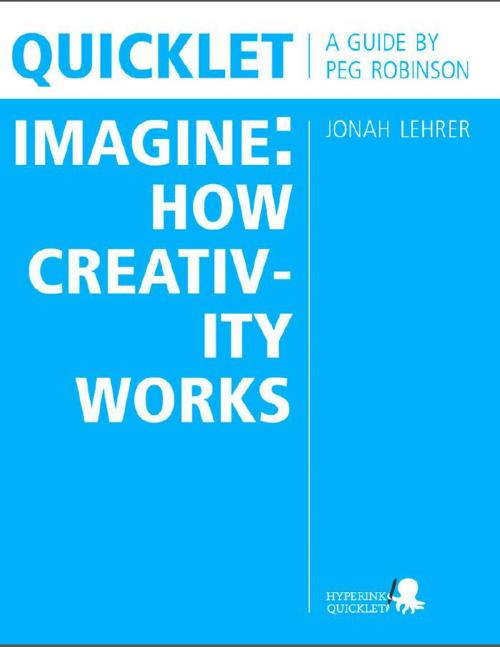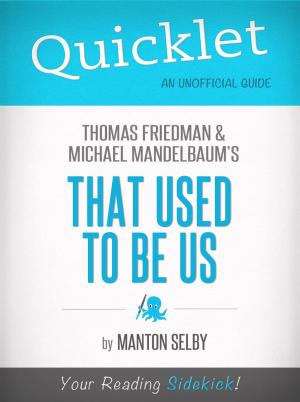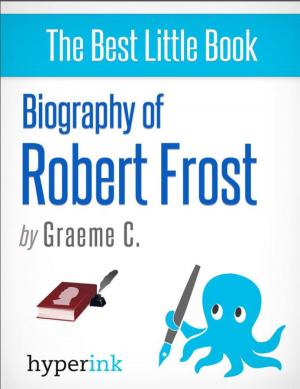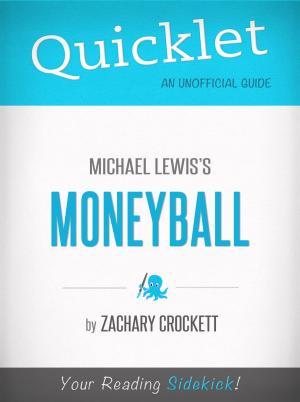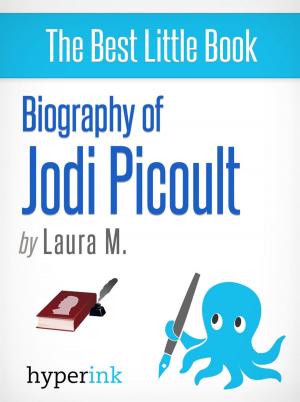Quicklet on Jonah Lehrer's Imagine: How Creativity Works: Chapter Summaries and Commentary
Nonfiction, Health & Well Being, Self Help, Self Improvement, Creativity, Art & Architecture, General Art, Social & Cultural Studies, Social Science| Author: | Peg Robinson | ISBN: | 9781614646808 |
| Publisher: | Hyperink | Publication: | July 30, 2012 |
| Imprint: | Hyperink - Imagine: How Creativity Works Quicklet | Language: | English |
| Author: | Peg Robinson |
| ISBN: | 9781614646808 |
| Publisher: | Hyperink |
| Publication: | July 30, 2012 |
| Imprint: | Hyperink - Imagine: How Creativity Works Quicklet |
| Language: | English |
ABOUT THE BOOK
New York Times bestselling author Jonah Lehrer has produced another bestseller—this time focusing on the creative mind. His book, Imagine: How Creativity Works, was released on March 18, 2012. According to MarketWatch.com, by April 8 it was number one on the NYT bestseller list, following in the footsteps of Lehrer’s prior books, How We Decide, and Proust Was a Neuroscientist.
Creativity is an attribute often desired more in theory than in fact. In practice it is often marginalized and discouraged in the harsh environment of the real world. In a time when the need for productivity and ingenuity are vitally needed, understanding how to foster creativity with understanding and intelligent application is vital. Teachers, businessmen, economists, scientists, and politicians observing the challenges facing the world and its nations understand the desperate need for creative, innovative thinkers. Individuals, yearning to live satisfying, productive lives, long for ways to ignite their own creative abilities.
Understanding of how human creativity functions and what supports creative ability has been a human goal for centuries. In our current time, modern research allows a better understanding than at any time in the past. Imagine offers insights into these discoveries, and hints as to how we can encourage creative growth, in small ways and large.
Imagine covers the neurological, psychological, and environmental factors currently believed to promote successful creative production. The book focuses on three primary areas of creative endeavor.Artistic creativity: music, writing, and film, among others.Scientific creativity: mainly mathematics, physics, neuroscience.Economic creativity: business creativity which pursues breakthroughs in ways that can be marked, and which develops creative methods of marketing salable products and services.
EXCERPT FROM THE BOOK
Where in the first chapter Lehrer’s attention was given to the third stage—the AHA!, in this chapter he highlights the prior two stages: analytical thinking and frustration. His message is that this stage, is critical to art, and that it depends on the science he’s described. Like the polishing stages of poetry he discusses with his Auden material, the development of the “I Love New York” slogan and logo depended on the dopamine feedback loop—the reward that would allow Milton Glaser to stick to his task, generating layer after layer of cognitive memory associations such that, when he saw the answer, he recognized it and could then perfect it.
The final scientist Lehrer covers in this chapter is Joe Forgas, of the University of New South Wales. Forgas has developed an experiment in memory retention, in which he tests the ability of customers to remember random tchotchkes set out near the cash register of a stationery store in Sydney, Australia. On gray, gloomy days Forgas played Verdi’s Requiem in the background, hoping to exaggerate a natural depressive mood state. On sunny, bright days he played Gilbert and Sullivan music to help generate an upbeat, cheery mood. The findings were that people exposed to depressing music on a gray day remembered more tchotchkes than people exposed to bouncy, funny music on a sunny day.
Lehrer (among others) draws a suggestion, from this and from other research indicating that there’s a correlation between depression and bipolar disease and artistic achievement, that depression, like stimulants, can help with creative projects. It has been recognized for some time that there is a relationship between the two, however Lehrer doesn’t succeed in clarifying that relationship in a compelling way that escapes the problems of much of this chapter.
ABOUT THE BOOK
New York Times bestselling author Jonah Lehrer has produced another bestseller—this time focusing on the creative mind. His book, Imagine: How Creativity Works, was released on March 18, 2012. According to MarketWatch.com, by April 8 it was number one on the NYT bestseller list, following in the footsteps of Lehrer’s prior books, How We Decide, and Proust Was a Neuroscientist.
Creativity is an attribute often desired more in theory than in fact. In practice it is often marginalized and discouraged in the harsh environment of the real world. In a time when the need for productivity and ingenuity are vitally needed, understanding how to foster creativity with understanding and intelligent application is vital. Teachers, businessmen, economists, scientists, and politicians observing the challenges facing the world and its nations understand the desperate need for creative, innovative thinkers. Individuals, yearning to live satisfying, productive lives, long for ways to ignite their own creative abilities.
Understanding of how human creativity functions and what supports creative ability has been a human goal for centuries. In our current time, modern research allows a better understanding than at any time in the past. Imagine offers insights into these discoveries, and hints as to how we can encourage creative growth, in small ways and large.
Imagine covers the neurological, psychological, and environmental factors currently believed to promote successful creative production. The book focuses on three primary areas of creative endeavor.Artistic creativity: music, writing, and film, among others.Scientific creativity: mainly mathematics, physics, neuroscience.Economic creativity: business creativity which pursues breakthroughs in ways that can be marked, and which develops creative methods of marketing salable products and services.
EXCERPT FROM THE BOOK
Where in the first chapter Lehrer’s attention was given to the third stage—the AHA!, in this chapter he highlights the prior two stages: analytical thinking and frustration. His message is that this stage, is critical to art, and that it depends on the science he’s described. Like the polishing stages of poetry he discusses with his Auden material, the development of the “I Love New York” slogan and logo depended on the dopamine feedback loop—the reward that would allow Milton Glaser to stick to his task, generating layer after layer of cognitive memory associations such that, when he saw the answer, he recognized it and could then perfect it.
The final scientist Lehrer covers in this chapter is Joe Forgas, of the University of New South Wales. Forgas has developed an experiment in memory retention, in which he tests the ability of customers to remember random tchotchkes set out near the cash register of a stationery store in Sydney, Australia. On gray, gloomy days Forgas played Verdi’s Requiem in the background, hoping to exaggerate a natural depressive mood state. On sunny, bright days he played Gilbert and Sullivan music to help generate an upbeat, cheery mood. The findings were that people exposed to depressing music on a gray day remembered more tchotchkes than people exposed to bouncy, funny music on a sunny day.
Lehrer (among others) draws a suggestion, from this and from other research indicating that there’s a correlation between depression and bipolar disease and artistic achievement, that depression, like stimulants, can help with creative projects. It has been recognized for some time that there is a relationship between the two, however Lehrer doesn’t succeed in clarifying that relationship in a compelling way that escapes the problems of much of this chapter.
